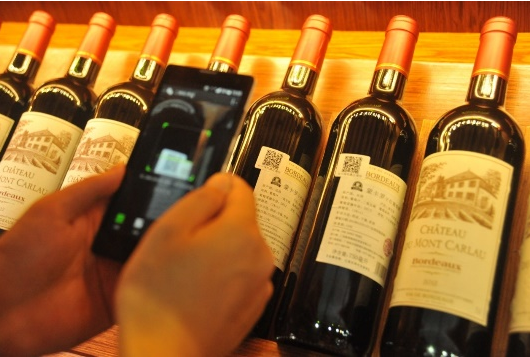Asset management
Alcohol anti-counterfeiting traceability RFID solution
With the establishment of RFID anti-counterfeiting traceability platforms for high-end liquor companies "Moutai" and "Wuliangye" brand series of liquors, domestic liquor production companies including red wine have built their own RFID anti-counterfeiting traceability systems. The use of Internet of Things RFID radio frequency technology can provide 7*24 hours real-time supervision of alcohol products, and use NFC chips to provide thorough anti-counterfeiting technology, which can automatically identify and collect timely and accurate RFID logistics label information in a long-distance non-contact manner, and real-time Transfer information to the back-end database. Use NFC mobile apps to narrow the distance between consumers and manufacturers, promote consumption and increase sales, combat counterfeiting, and establish a reputation for authentic brands.

System planning:
Make an NFC anti-counterfeiting electronic label for each bottle of wine, and assign an RFID logistics label to each wine box. Initialize the RFID label from the production and packaging link in the winery workshop, and use the RFID reader in each monitoring and tracking link Automatically identify and upload the RFID logistics tag data entering this link to the back-end database. The logistics distribution process uses handheld RFID card readers to complete the receipt and distribution of goods until the retail link. Consumers can use their NFC mobile phones to inquire about the authenticity of the product, and find the "tracing and traceability" information, so that consumers can buy with confidence, and businesses can sell with confidence, completely eliminating fake wine.
The system consists of eight parts:
1. Issuing labels: Make a unique NFC anti-counterfeiting label for each bottle of wine, and issue an RFID logistics label for each box of wine. The ID of the RFID logistics label can establish a corresponding connection with the product barcode of the existing ERP system, which is convenient for new RFID. The integrated application of the system and the old system avoids repeated data entry and increases the workload of personnel.
2. Receiving and warehousing: For the link of forklift pallet receipt, RFID readers can be deployed in the receiving channel to automatically identify and collect RFID logistics label information in batches and upload it to the back-end database. For dealers receiving small batches of goods, the RFID handset can be used to complete the receipt confirmation and upload the information to the back-end database.
3. Delivery out of warehouse: For the link of forklift pallet delivery, RFID readers can be deployed in the delivery channel to automatically identify and collect RFID logistics label information in batches and upload it to the back-end database. For small batch shipments by distributors, RFID handsets can be used to complete the shipment confirmation and upload the information to the back-end database.
4. Retail shipment: In the terminal retail link, for each bottle of wine (or full box of wine) sold, a sales registration process must be performed.
5. WEB query statistics: The factory management personnel can query the issuance of RFID tags, query the distribution progress, statistical sales reports, etc. on the WEB side.
6. Consumers: Consumers can download and install App software for free, use their NFC mobile phones to scan anti-counterfeiting labels, check the authenticity, and further query traceability information. You can recommend the query results to your own circle of friends, and forward them to your own social platforms such as WeChat, Weibo, etc. This is the best channel for manufacturers to bring consumers closer. In future consumer behavior activities, "check first and buy later" will be the norm, and it will be difficult to obtain the trust and purchase of consumers without finding the true source of products.
7. Self-service inquiry: Deploy self-service inquiry machines in stores such as special counters in shopping malls. For consumers who do not have NFC mobile phones, they can take the wine to the NFC card reader of the self-service machine to query anti-counterfeiting information and logistics traceability information.
8. System integration: RFID system can realize data integration with enterprise's ERP system, logistics warehousing system, POS system, etc. through interfaces to avoid repeated maintenance of data, maximize data sharing, and protect original IT investment.
Project value:
This solution helps wine manufacturers to establish their own product traceability anti-counterfeiting system as soon as possible at low cost. Compared with barcode, QR code, SMS anti-counterfeiting methods, NFC chip-level anti-counterfeiting is more secure and reliable, and it is most convenient for consumers to check and interact. In the production and logistics links, the advantages of RFID non-contact long-distance recognition are more obvious, the operation of personnel is more convenient and faster, the implementation of inventory work is more accurate, the inventory cycle can be greatly reduced, and the workload of warehouse management, receipt and delivery, etc., is significantly reduced.
 Scan code and wechat
Scan code and wechat